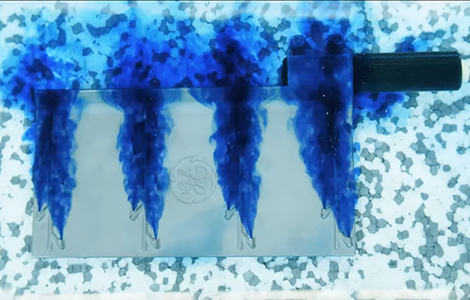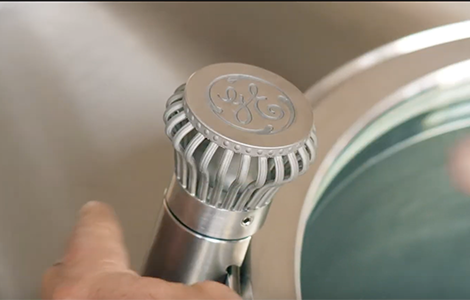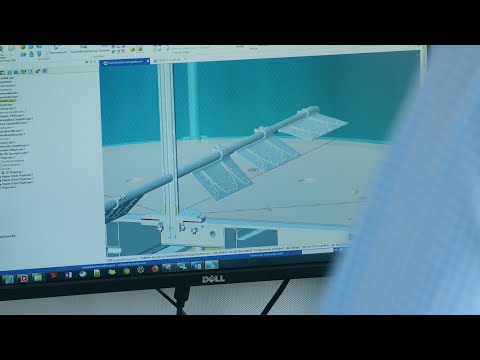https://giphy.com/embed/VefZm0TwhDaW3QjjCZ
Preparations for the beer-fuelled Oktoberfest are serious business in Germany, but none as much as those taken by the Bavarian brewers of the copious amounts of beer that will be served.
Knowing this, GE Additive’s CEC Munich team stepped in to help Bamberg-based Kaspar Schulz – the oldest brewing equipment manufacturer in the world – to see where additive manufacturing could bring benefits.
With GE Additive’s Concept Laser facility just down the road in Lichtenfels, it was able to tap into some local knowledge as they targeted parts from the industrial brewing equipment that could benefit from additive manufacturing over traditional machining.

The racking blade in testing, showing the dispersion of fluid from channels 3D printed within
A new design for a racking blade that could bring improvements to the current racking arm for the lauter tun was built on the idea of improving the filtration effect of the spent grain bed in the vessel in order to rinse it more thoroughly in order to save time and make it more efficient.
The design was built around simulation data, and while final use verification in the complete brewing process is still to come, development of the product has moved at pace in a very short space of time.
“Our team was quickly able to come up with a design to efficiently loosen the spent grains and inject water, throughout the bed, during rotation,” explains Dr Matthew Beaumont, GE Additive’s CEC Munich site leader.
“The design of a thin blade that has internal channels to distribute water evenly is only achievable using additive manufacturing.”
Functional integration, and a reduction of the number of joints and seals are the quick wins in this scenario that additive offers without a massive change to the existing machinery. Beyond that, there are still incremental improvements to individual steps in the brewing process that could benefit from the design freedom that additive allows.

A custom access door knob that was an early exercise in understanding the ability to customise parts for customers, and the savings in waste materials from traditional machining
Kaspar Schulz’s hear of R&D Jörg Binkert was left delighted that GE Additive approached them. “We were already familiar with 3D modelling and making designs with CAD, but additive manufacturing was something new for us.
“But once we started looking, it didn’t take us long to find a couple of good applications that could really be improved by using additive technology.”
The process was also applied to the tun’s access door knob, which Kaspar Schulz currently mills the part out of a block of stainless steel. “This is something that we see regularly in aircraft manufacturing, but it was a surprise to see it in use here, too,” said Beaumont.
“Using additive, we were able demonstrate savings in terms of material use, manufacturing time and include the possibility to customise the part with their company logo – at no additional cost or effort.”
Kaspar Schulz might be over 300 years old and an old hand at creating brewing equipment, but with the addition of additive manufacturing its interesting to see how even it can improve what it offers.






